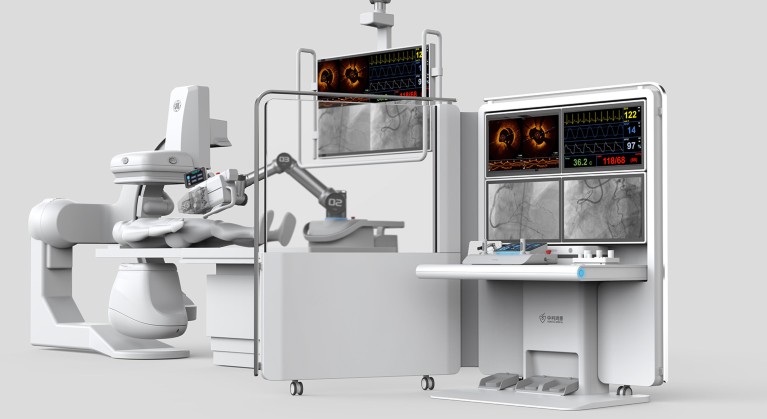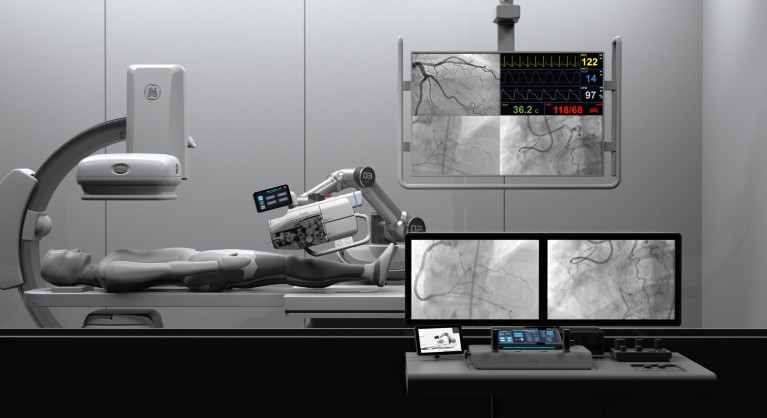
Illustrations of robotic devices designed to enable remote cardiovascular operations so that surgeons avoid X-ray exposure.
Robotic devices being developed by researchers in China aim to reduce surgeons’ exposure to X-rays during surgical procedures to install guidewires for balloons and stents, which are increasingly being used to treat cardiovascular conditions.
In conventional cardiovascular surgery involving balloons or stents, the surgeon punctures an artery and delivers a slender, flexible guidewire, which is used to guide the balloon or stent along the blood vessel to the damaged region.
The position of the guidewire needs to be intermittently checked by taking X-ray images to prevent perforating the blood vessel. To reduce their exposure to X-ray radiation, the surgeon wears a lead suit during the procedure, but this doesn’t eliminate the risk.
The emergence of assistant robots promises to change this. By allowing surgeons to perform the procedure remotely, the robots can help surgeons avoid any exposure to X-rays.

Illustrations of robotic devices designed to enable remote cardiovascular operations so that surgeons avoid X-ray exposure.
“Surgeons can sit next to the console, without wearing a lead suit,” explains Liang Peng, CEO of Zhongke Hongtai, a company in Beijing, China, which specializes in the development of medical robots. “They can remotely control the robotic arm to implant the guidewire, and relatively easily complete the surgery.”
The vascular intervention robots are more stable than human hands, and could help surgeons in achieving precise delivery, say the researchers.
Although several vascular intervention surgery robots are already available and can also protect surgeons from X-rays, these can deliver only a single guidewire at a time. However, many cardiovascular conditions are more complex, such as vascular bifurcation, and require more than one guidewire.
Zengguang Hou is a professor in medical robot and artificial intelligence at the Institute of Automation, Chinese Academy of Sciences, in Beijing. He is also the founder and chief scientist of Zhongke Hongtai. To develop a robot capable of treating these complex cases, Hou’s team adopted a bionic technical solution that mimics human fingers, so that the two guidewires can either move axially or rotate around their own axes independently of each other. The team has also developed a precise force sensor that relays changes in force to the surgeon’s control unit, improving the tactile feedback during the procedure, adds Peng.
The vascular intervention robots that Peng and Hou are developing have been protected by 15 Chinese and two international patents. The device has undergone a series of trials, and has been tested by performing remote stent implantation surgery for patients in a hospital. A prototype of the device is being fine-tuned and the team hope to apply for medical device approval within China before 2026.
Besides device development, Hou’s team is also conducting basic research in a range of related areas including expert learning and intraoperative navigation, a technology that assists surgeons during surgery by guiding them through a patient’s anatomy. For example, with the aim of improving the of installation accuracy of guidewires, the researchers are using AI technology to teach robots advanced surgical skills1.
“Beyond being mere tools, surgical robots should also help to maximize the overall performance of surgery,” says Hou.


